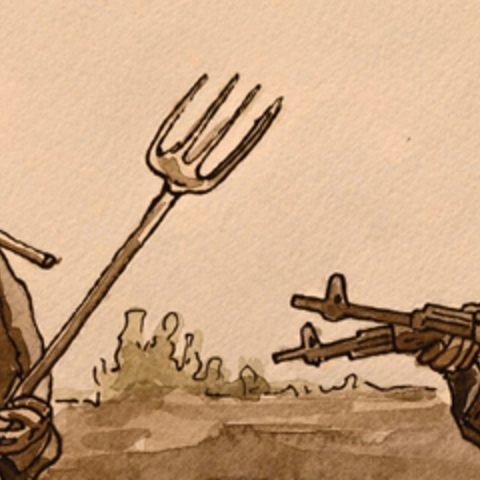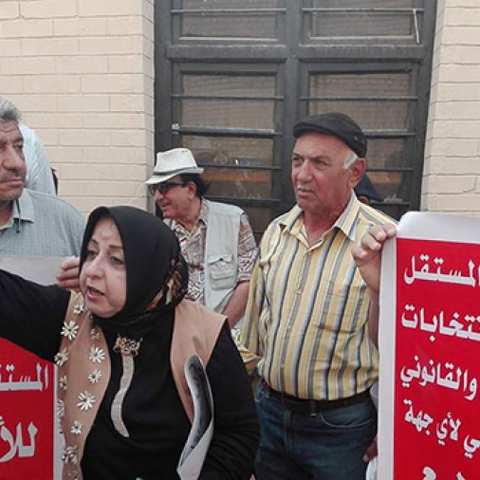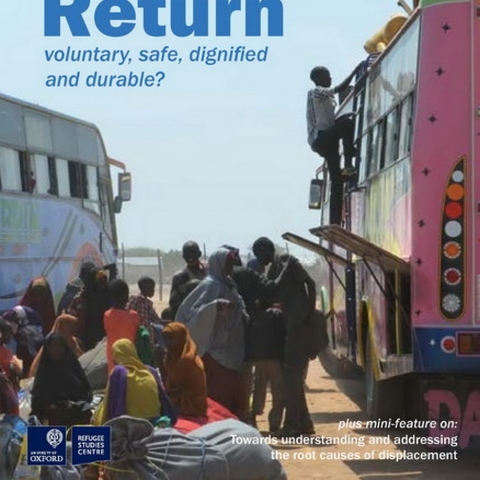Analyzing Iranian Influence in Iraq
The Kurdistan Times and Rosa Luxemburg Foundation-Beirut Office

IMAGO / APAimages
Following the establishment of the Islamic Republic of Iran in 1979 under Ayatollah Khomeini, the doctrine of exporting the revolution became institutionalized within Iran’s political system, posing a strategic threat to Iraq, which shares approximately 1,400 km of borders with Iran. The dominant ideological narrative in Iran during the Iran-Iraq War of the 1980s claimed that the liberation of Jerusalem could be achieved through Iraq and Karbala. However, the post-2003 US invasion of Iraq benefited Iran to the extent of exerting its influence to achieve its expansionist dreams, as Iran's post-1988 military doctrine rejects conventional warfare in favor of asymmetric and proxy strategies.
The histories of Iran and Iraq have been deeply intertwined since ancient times, dating back to when Iraq was part of the Sassanian Empire (224 to 651). However, in the medieval period, particularly during the Safavid Shiite era (1500–1700), Iranian religious influence intensified through Shiite proselytization, as evidenced by the presence of numerous Shiite shrines in Iraq, including the shrine of Imam Ali[1] and other sacred sites, now numbering around 400.
Iranian influence in Iraq is facilitated by shared religious ties with Iraq’s Shiite majority and the security leverage of Tehran-affiliated armed groups. Additionally, historic and Iranian relations with the former Iraqi regime's oppositional Shia groups, as well as Kurdish parties and armed groups, have helped Iran sustain its influence within the elites. Some analysts overlook the strong Kurdish-Iranian relationship. Rival political parties, not only among Shiites and Kurds but even among Sunnis, resort to Iran to counter the influence wielded by the US, Turkey, and other Sunni Arab countries. However, this influence is met with resistance from Iraqis, stemming from a new but deep-seated nationalism across Iraq. Arguably, this leans more towards patriotism than classic Arab nationalism, framed particularly along ethnic and sectarian lines distinguishing between Arabs and Persians. As for the Kurds, Iranian relationships with different Kurdish political parties have shaped Kurdish politics primarily since the time of the Shah regime and Mullah Mustafa Barzani’s Aylul revolution[2]. The Kurdish factions have been divided between the regional powers of Turkey and Iran. Given the close ties between the Kurdistan Democratic Party (KDP) and Turkey, the Patriotic Union of Kurdistan (PUK) has maintained a strong relationship with Iran to counter the KDP’s influence in Erbil and Baghdad. So far, Iran still does not exert influence over the KDP. The protests in October 2019 (the Tishreen Movement) exposed the nationalist rejection of Iranian intervention, as demonstrators attacked Iranian consulates in Basra and Karbala while chanting slogans such as "Iran, get out." Moreover, accusations of Iranian infiltration in Iraq’s internal affairs have led to widespread criticisms, with protesters coining derogatory terms like "the tails” - the proxies - to describe groups aligned with Iran at the expense of Iraq’s national interests.
Beyond sectarian affinities and economic interdependencies, Iran strategically views Iraq as a crucial part of its "Axis of Resistance." Tehran does not accept conventional statehood paradigms and persistently seeks to expand its regional influence through Iraq. During the 1980s, Saddam Hussein acted as the primary barrier against Iranian expansionism in Iraq. However, the 2003 U.S. invasion provided Iran with two significant opportunities: a) the collapse of the Ba’athist regime and b) the ascendance of Shiite opposition factions—many of whom had been exiled to Iran and were ideologically aligned with Tehran. This allowed Iran and the U.S. to exert influence in Iraq simultaneously, fostering diplomatic coordination, especially during the Obama administration in 2007. Since 2003, Iran has established a robust diplomatic presence across Iraq, including embassies and consulates in Baghdad, Basra, Najaf, Karbala, Erbil, and Sulaymaniyah. Although ostensibly diplomatic, these institutions are heavily influenced by the Iranian Revolutionary Guard Corps (IRGC). Key Iranian ambassadors to Iraq, such as Kazem Qomi, Danaifar, and Iraj Masjedi, have distinctly security and military backgrounds, underscoring Tehran’s securitized approach to diplomacy in Iraq. For Iran, Iraq is not merely a neighboring state but an operational theater for strategic and military engagements.
Iran’s second primary intervention in Iraq occurred in 2014, when ISIS occupied one-third of Iraq’s territory. Under the pretext of ‘counterterrorism,’ Iran expanded its military footprint in Iraq and Syria. Tehran-backed forces, particularly the PMF, played a central and decisive role in countering ISIS, with figures aligned with Iran assuming command positions within the PMF[3]. The PMF has increasingly mirrored the IRGC’s structure, with Iran’s Supreme Leader, Ali Khamenei, openly endorsing the sustained presence of these forces - for instance, in his meeting with Iraqi Prime Minister Mohammed Shia al-Sudani in early 2025. Iran was also the first country in the region and worldwide to extend a helping hand to the Kurds in Iraq to block the ISIS advancement toward Erbil.
During the ISIS war, over 100 Iranian military bases operated across Iraq, Syria, and Lebanon, solidifying Tehran’s influence in the broader Levant. These bases have since become integral to Iran’s strategic positioning in its prolonged confrontation with the U.S. and regional adversaries.
While the PMF was unofficially legitimized by Ayatollah Sistani’s 2014 fatwa[4] for national defense, in practice, it has been predominantly Shiite, with approximately 85% of its ranks adhering to Shiism. Certain factions within the PMF remain directly subordinate to Khamenei rather than the Iraqi state. These factions, including Jund al-Imam, Al-Tufuf Brigade, Sayyid al-Shuhada Brigade, Al-Khurasani Brigade, and the Imam Ali Brigade, operate alongside other Tehran-aligned militias like Hezbollah, Asa'ib Ahl al-Haq, Badr Organization, and Harakat al-Nujaba. The PMF’s expansion is evident in its growth from 60,000 fighters in 2014 to 236,000 by 2025. It reflects its institutionalization within Iraq’s security apparatus in which the Shiite political parties exert their influence within the Iraqi Government and state.
The assassination of IRGC Quds Force Commander Qasem Soleimani in 2020 weakened Iran’s control over its proxy networks in Iraq. Soleimani’s successor, Esmail Qaani, has struggled to replicate his predecessor’s command effectiveness. Unlike Soleimani, a cross-border operational strategist, Qaani has been relegated to a coordination role rather than a decision-maker. Meanwhile, U.S. and international pressure on Iran has intensified, particularly as Washington seeks to limit Tehran’s influence in Iraq. This was evident in a meeting between U.S. Secretary of State Antony Blinken and Iraqi Prime Minister Sudani in early 2025, where Blinken urged Baghdad to curb the activities of Iran-backed militias.
Internally, divisions among Iraqi Shiite political factions regarding Iran's role in Iraq have become increasingly pronounced. Muqtada al-Sadr remains the only Shiite leader openly calling for disbanding Iran-backed militias, advocating for exclusive state control over arms. In October 2024, Sistani reinforced this position, stating unequivocally that weapons should only be in the hands of the state, a stance opposed by other Iran-aligned groups.
With the dramatic fall of the Assad regime in Syria, questions arise about the sustainability of Iranian influence in Iraq. Some Iraqi politicians and even international actors in Iraq view this as an opportunity to reduce Tehran’s dominance and reclaim national sovereignty. However, the broader Shiite political strategy does not foresee a radical shift, as Shiite actors perceive Iran as their only reliable ally against Sunni regional adversaries. Historically, Iraqi Shiites have aligned with Iran in response to external threats, whether from the Ottoman Empire or the contemporary Sunni Arab world. Thus, while the Assad regime's collapse may reduce Iran’s leverage, the prospect of a Sunni jihadist resurgence in Syria—likely aligned with Turkey and Saudi Arabia—could compel Iraqi Shiites to maintain Iran’s support as a protective buffer.
Predictably, Sunni actors in Iraq, particularly those aligned with Iran’s rivals, have signaled growing opposition to Tehran’s influence. However, Mahmoud al-Mashhadani, a Sunni politician and former parliamentary speaker, recently admitted that if the U.S. and Iran were to reach a settlement, Iraq would inevitably follow suit. Nonetheless, he also warned that Iraq might drift towards "strategic ambiguity" in the event of intensified regional rivalries following the fall of Assad. The point is that alliances in Iraq are often not strategic but tactical.
The geopolitics of the Middle East remains highly fluid. Iran faces strategic constraints for the first time in decades, but its influence has not collapsed. Israel’s targeted attacks on Iranian infrastructure have exposed Tehran’s vulnerabilities. However, neither the U.S. nor Israel seek outright regime change in Iran, as this could destabilize the region further. Instead, Washington’s "maximum pressure" campaign aims to contain Iran rather than dismantle its influence entirely. Iran’s reformist factions remain hesitant to negotiate with the U.S. under Trump-era conditions, fearing increased isolation.
Many Iraqis perceive this development as an opportunity for Iraq to weaken the Iranian security apparatus within the region and to reclaim autonomous decision-making power. However, the strategic calculations behind the Shia alignment—long based on the belief that Iranian-aligned forces are not just an ally but the only counterweight to global encroachments—do not readily apply to Iraq’s evolving political landscape. In particular, the Shia forces in post-regime-change Iraq, whose composition now predominantly reflects Iran’s revolutionary outlook, are less capable of forging alliances with the secular world order that is increasingly defined by Arab Sunni nationalism.
A significant part of Iran's influence in Iraq also stems from economic ties. Iraq ranks third after China and Turkey in trade exchanges with Iran among 15 neighboring and surrounding countries, amounting to approximately $20 billion in 2024. According to Iranian customs statistics, this marks a 6% decrease compared to 2023.
However, the trade exchange is entirely in Iran's favor, as Iraq does not export its goods in return. Instead, its market relies on cheap Iranian products. Meanwhile, Iran receives hard currency from these transactions, which it cannot easily access due to U.S. and international sanctions.
Iraq, caught between competing regional powers—Saudi Arabia, Iran, and Israel—has sought to maintain neutrality. However, ongoing regional transformations suggest that Iraqi factions may struggle to preserve this balancing act. Given Iraq’s geostrategic importance, sectarian diversity, and economic fragility, regional actors will continue to exploit its vulnerabilities, reinforcing its role as a battleground for competing interests rather than an independent actor in Middle Eastern politics.
The dramatic changes unfolding in the Middle East result from transformations taking place at the international level. Regional actors—such as Iran, Saudi Arabia, Israel, and Turkey—aspire to position themselves as regional superpowers, thereby seeking to reclaim the strategic void that the retreat of American and Russian influence has left. Consequently, it is of paramount importance for the leadership in Iraq—across its Kurdish, Shia, and Sunni constituencies—to endeavor to preserve the gains made by the Iraqi people and to steer the country away from being subsumed into yet another cycle of external rivalries. In the current context of renewed conflict, it appears unlikely that the United States will be able to reassemble the various disjointed armed factions in Iraq, nor does Iraq currently possess the economic capacity to counter these challenges effectively. Following the struggle against ISIS—particularly under the auspices of the Al Sudani government—a degree of internal and international confidence was achieved, leading to a reorientation toward social peace and economic development. It is imperative, however, that these policies are maintained to prevent Iraq from descending once again into a new cycle of internal disintegration.
Geopolitically, the contemporary dynamics of the Middle East are dramatic and far-reaching. Although Iran has, for the first time in recent memory, demonstrated considerable capacity for assertiveness, it has reached the limits of its expansionist ambitions. Israel, for its part, can counter Iranian ambitions and now presents a formidable challenge. Even if the Trump administration were to authorize additional strikes against Iran, it is clear that Iran’s strategic position has already been significantly weakened. However, this will not result in regime change. Moreover, neither Donald Trump nor Israel currently possesses the capacity to subjugate Iran effectively, considering that Israel could not fully achieve its goals in Gaza and Lebanon, nor can they compel a regime change in Iran akin to what occurred in Syria. In this regard, the US “maximum pressure” strategy—appears to be directed solely at constraining Iran’s regional influence and preventing it from acquiring nuclear capability and re-establishing its regional hegemony. The reformist government in Iran has not hidden its willingness to collaborate with the Trump administration, and the declarations made by Islamic Republic vice-president Jawad Zarif at the World Economic Forum in Davos indicate that Iran seeks to resume negotiations concerning its regional role and nuclear Joint Comprehensive Plan of Action (JCPOA) deal. The underlying concern of the United States and Saudi Arabia is that, regardless of the cost, Iran might ultimately become a nuclear power soon. From the perspective of Iranian conservative strategic thought, the sole guarantee of Iran’s security is for it to achieve an atomic arsenal eventually. This is where the US, Israel, and Saudi Arabia should make sure Iran will not reach a nuclear arsenal, which is only possible through reactivation of the JCPOA.
In light of the complexities outlined above, Iraq must maintain a stance of strategic neutrality by seeking to curtail Iran’s influence and manage Turkey’s increasing assertiveness. Concurrently, the United States and the European Union should reinvigorate the Joint Comprehensive Plan of Action (JCPOA) with Iran, thereby facilitating Iran’s reintegration into the international community while prompting it to reconsider and ultimately moderate its expansionist policies, therefore ending the Iranian influence in Iraq and bringing all pro-Iranian factions under the Iraqi Army. By bolstering a credible peace initiative in Israel, the United States would also dismantle one of the primary rhetorical instruments Iran employs to justify its regional interventions in the name of sovereignty. These measures would help preserve Iraq’s autonomy and stabilize the broader Middle East, ensuring that Iraq can safeguard its national interests and build robust domestic institutions without becoming ensnared in external geopolitical rivalries. Overall, Iraq remains weak to regional and international interventions as long as it fails to promote democracy and resolve political disputes among various Iraqi factions and Iraqi factions among themselves.
[1] Located in Najaf, Iraq, is a mausoleum that Muslims believe contains the tomb of Ali ibn Abi Talib, the fourth caliph of Islam)
[2]The Aylul Revolution, led by Mullah Mustafa Barzani from September 11, 1961, to March 1975, was a Kurdish uprising against the Iraqi government, ending after the Algiers Agreement cut off Iranian support to the Peshmerga,
[3] The Popular Mobilization Forces (PMF) is a coalition of predominantly Shi'a militias in Iraq, was formed in 2014 to fight ISIS and later integrated into Iraq’s security forces, but its influence grew beyond counterterrorism, sparking tensions; its role remains controversial, especially after the U.S. killing of its leader Abu Mahdi al-Muhandis in 2020 and ongoing disputes over its autonomy.
[4] In 2014, Grand Ayatollah Ali Sistani issued a fatwa calling on Iraqis to take up arms against ISIS, leading to the formation of the Popular Mobilization Forces (PMF).



